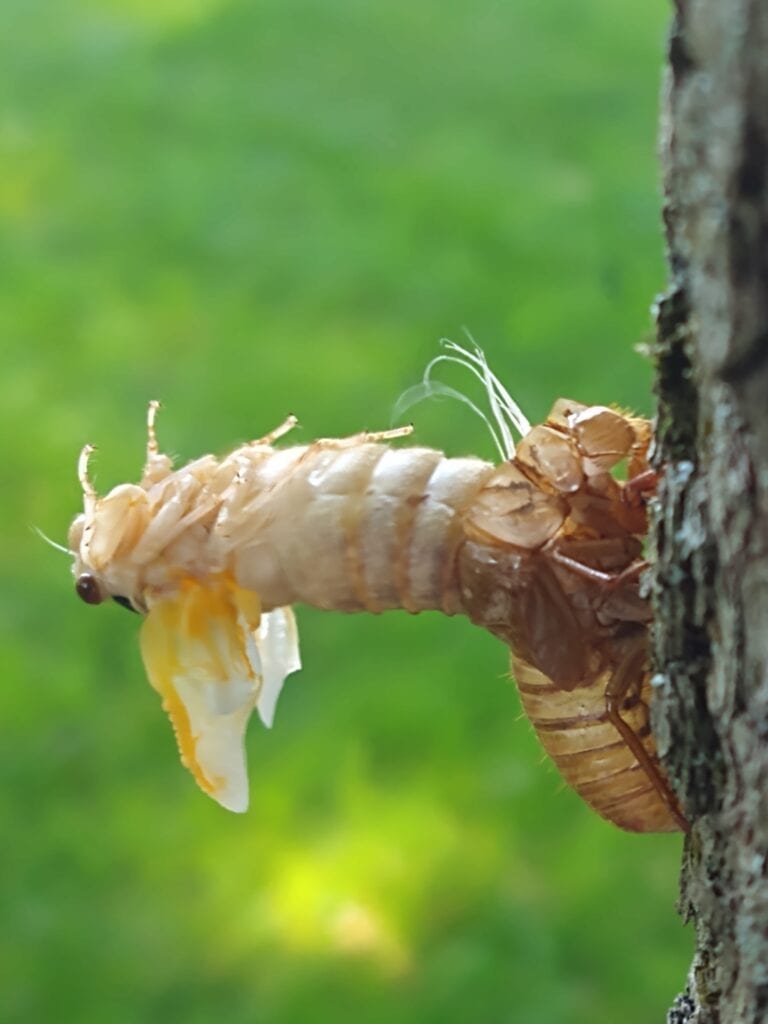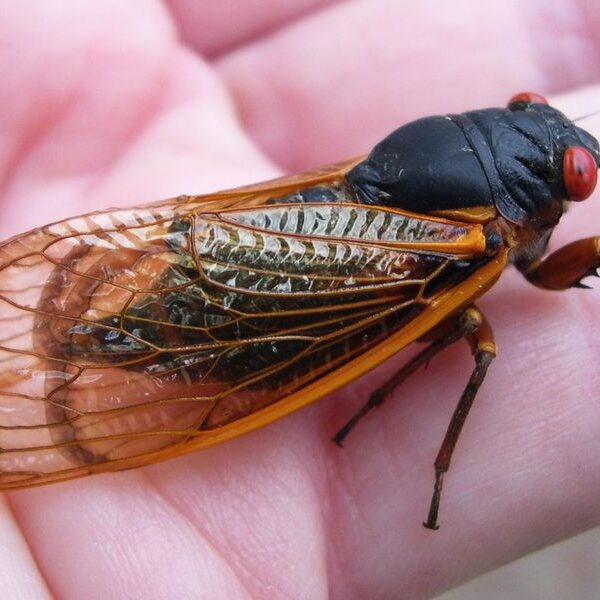They’re Back ….
The 17 year brood is back again, last seen in 2004. From online conversations, it appears that the Cicada population is considerably smaller this year. What are your observations?
Cicadas have a rather strange life cycle. They hatch from eggs in tiny tree branches which fall to the ground. From there, they burrow through the soil and seek nourishment by attaching themselves to the roots of the tree. For the next 17 years, the Cicada progressively outgrows its skin, and molts several times. Then, on the 17th year (nobody knows how it keeps time), the entire population digs its way to the surface.
The final molt takes place soon after the Cicada emerges from the ground. It attaches to a handy surface, and does an Incredible Hulk type manuever, splitting the back of its former shell, and stepping out as a full fledged adult.

The adults do not eat, drink, or do much of anything except produce an eerie buzzing sound, which is a mating call.
Within a day after mating, the male dies. The female lives a little longer, climbs the nearest tree and seeks out a small twig at the very top. She walks along the underside of the twig injecting fertilized eggs into the tender bark, causing enough damage to cause the twig to fall to the ground, The life cycle is complete. The damage to healthy trees is negligible.
The Cicada does not bite or sting, and is a rather gentle soul. You can pick it up and play for hours. A great learning moment for children.
Some pest control companies are offering to chemically attack the insects to “protect your plants and home.” Please do not buy into this. Cicadas cause no real damage, and after a few short weeks, will be totally gone for the next generation to enjoy.
Opening Photo credit Nancy Hinkle AJC.com


It’s great that Vienna is right in the heart Brood X’s territory. You’re right that Cicadas are gentle souls and such fascinating creatures!